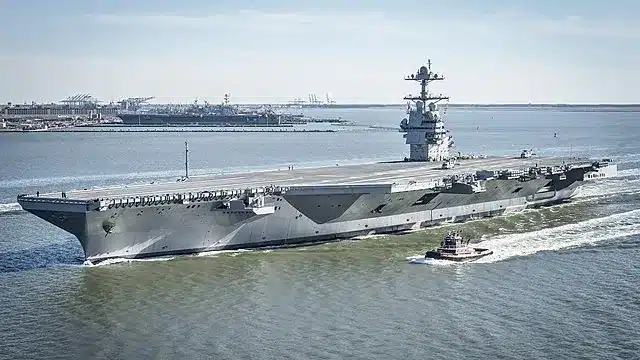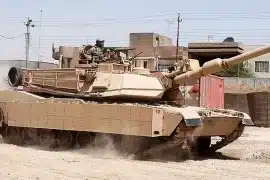Aircraft carriers are the pride of the US Navy, serving as mobile bases for a powerful and versatile air force. Currently, the US operates a fleet of 11 aircraft carriers. These colossal vessels are at sea for months at a time, facing not only the threats of modern warfare but also the relentless forces of nature. To ensure their survival and mission success, the U.S. Navy employs a range of innovative techniques and technologies. In this article, we delve into the strategies that make U.S. aircraft carriers hard to sink.
Weather Forecast: The First Line of Defense
Aircraft carriers must be prepared to face not only enemy combatants but also the wrath of Mother Nature. Comprehensive weather forecasts are crucial for planning a warship’s mission. The crew receives and processes these forecasts daily, paying particular attention to the most dangerous threat: hurricanes. To better understand and anticipate tropical storms and hurricanes, the U.S. military actively collects data. One vital instrument in this endeavor is the GPS dropsonde system. These devices are dropped from aircraft at specified altitudes and collect atmospheric data during their descent, which is then transmitted back to the aircraft via radio. This data helps naval planners make informed decisions in the face of impending storms.
The Hull: A Key to Buoyancy and Stability
Naval engineers and designers adhere to strict construction standards when building aircraft carriers, with a significant focus on the hull. The design of the hull is vital for enabling the ship to navigate through high waves while maintaining stability.

The key to an aircraft carrier’s buoyancy is that the bottom of the ship displaces a substantial amount of water. The volume of water displaced by the ship weighs more than the entire carrier itself. This results in a buoyant force greater than the gravitational force acting on the carrier, allowing it to float.
Defense Techniques: Making US aircraft Carriers Nearly Unsinkable
Although it is nearly impossible to make anything truly unsinkable, the U.S. Navy has continuously improved carrier survivability. While the Navy did experience the sinking of its first aircraft carrier, the Langley, by Japanese warplanes in World War II, modern carriers are far more resilient.
Speed and Maneuverability
One of the primary factors contributing to an aircraft carrier’s survivability is its speed and maneuverability. Carriers are always on the move, and they move fast. They can sustain speeds of up to 35 miles per hour, outrunning most submarines. The ability to relocate quickly within a 700 square mile area in just 30 minutes makes targeting a carrier a challenging endeavor for enemies. After 90 minutes, that area expands to over 6,000 square miles, further complicating the task of finding and targeting the carrier.
Unlimited Range
Thanks to nuclear propulsion, modern aircraft carriers have unlimited range. They are not dependent on fuel tankers servicing the rest of the fleet, reducing vulnerability to disruptions in fuel supply lines. This nuclear power enables carriers to execute deceptive maneuvers in any direction for extended periods, far exceeding the range of most hostile forces.
Carrier Air Wings
A typical Carrier Air Wing comprises dozens of advanced fighter aircraft equipped with sophisticated sensors and precision-guided weapons. Radar planes and electronic warfare aircraft provide early warning and countermeasures against threats. These aircraft can intercept attackers long before they enter the targeting range of a carrier, giving ample time for defense.
Escorts and Advanced Defenses
Aircraft carriers never deploy alone; they are accompanied by a formidable escort of surface combatants equipped with advanced air and missile defenses. Additionally, nuclear-powered attack submarines are unmatched in their ability to detect and eliminate hostile warships above and below the sea’s surface. Surface warships are being upgraded with new weapons systems and more powerful radars, making them even more formidable.
Summary of ‘Why are US Aircraft Carriers Hard to Sink?’
In conclusion, the U.S. Navy is renowned as the world’s most potent maritime force, and for good reason. The combination of speed, maneuverability, unlimited range, advanced weaponry, and a robust defense network makes U.S. aircraft carriers incredibly challenging targets. While nothing can be deemed entirely unsinkable, these carriers have proven their mettle and are a testament to naval engineering and strategy. The U.S. Navy’s aircraft carriers are, indeed, nearly unsinkable, ensuring the protection and projection of American power across the seas.







